Working in an Individual Review task as a lead assignee
Review tasks allow you to inspect an item list on an item-by-item basis. In an Individual Review task, all assignees work on their own versions of task items. As a lead assignee, you can review all assignees’ item versions and promote selected changes to the original central copy of the item.
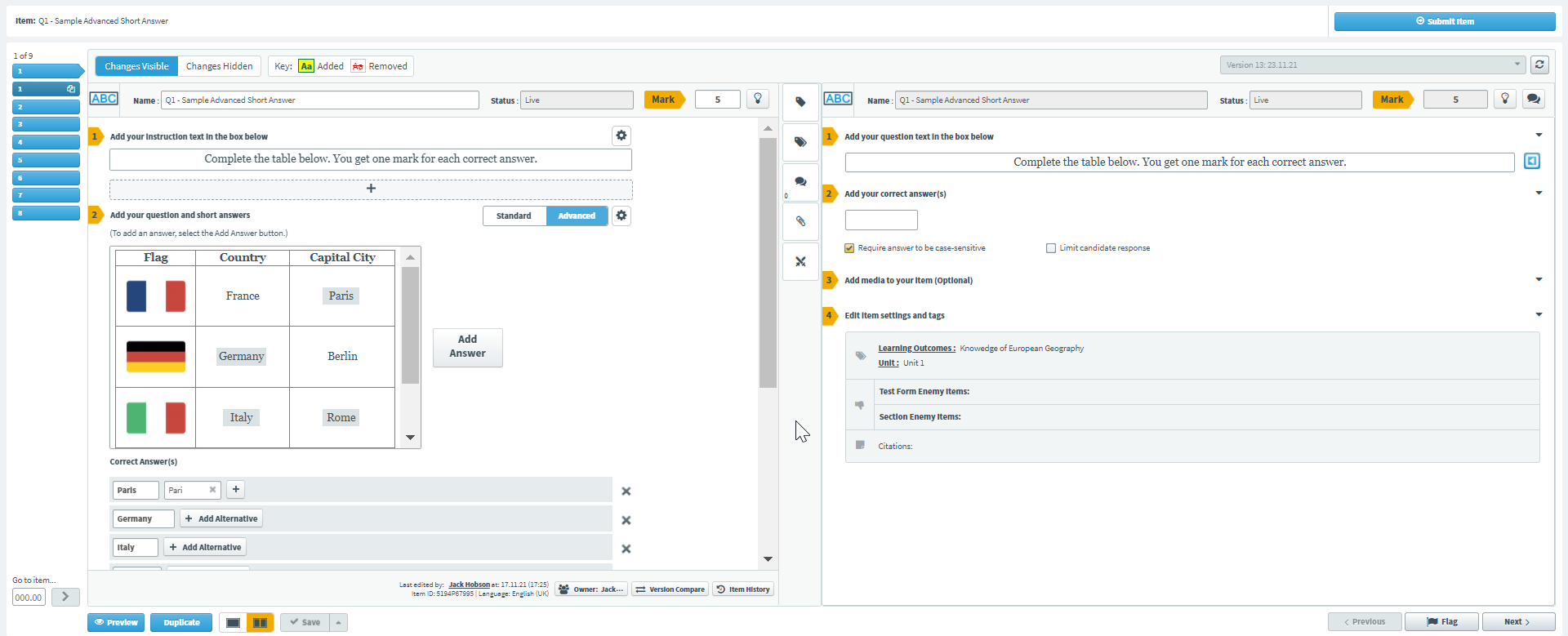
This article explains how to work in an Individual Review task as a lead assignee, including how to compare item versions and promote changes to the original item.
In this article
1. Open the task
On the Tasks list, select the Review task you want to work on. The task details panel displays the task’s description and doughnut charts representing the number of submitted items and days until the deadline. You can also download attachments if the task has any. For more information, read About the Tasks screen.

Select Open Review Mode to open the Item Review screen and start working on the Review task.

2. Preview an item
The Item Review screen contains the central copies of items in the associated item list. Items are displayed in the test driver, allowing you to see the items from a candidate’s perspective.
Use the item information panel to view the item’s settings.
| Icon | Setting | Description |
|---|---|---|
| Item Settings | View information about Item Version, Item Purpose, Marking Type, Mark, and Correct Answer. | |
| Item Tags | View the item’s assigned tag groups and tag values. For more information, see Using tags in items. | |
| Item Tag Collections | View the item’s assigned tag collections. For more information, read Using tag collections in items. | |
| Item Enemies | View any enemy items associated with the item. For more information, see Adding enemies to an item. | |
| Citations | View the item’s citations. For more information, see Adding citations to an item. | |
| Candidate Feedback |
View the correct answer and any candidate feedback that has been added to the item. For more information, see Adding candidate feedback to items.
NOTE: Correct answer may not always show as it depends on the item type.
|
Select Undock to pop out the dialog windows for any information available in the panel. Select and drag the dialog window to move it around the screen.

Select Dock to return the dialog window to the right-hand side panel.

Select an item breadcrumb on the item navigation panel to go to another item.
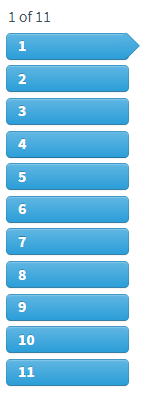
Alternatively, you can enter a specific item number into the Go to item field to navigate directly to that item.

If an item is in an item set, you can enter a decimal (such as 1.3) in the Go to item field to navigate directly to that item.

You can also select Previous and Next to move through the item list.

Flagging items
You can flag items to mark them for an action at a later time.
Exporting task items
As lead assignee, you can export the task items to analyse them in further detail. For further information, read Downloading Review task reports and Exporting Review task items.
Duplicating items
Lead assignees can duplicate existing items in a Review task.
3. Compare item versions
Select Edit Item to go to the Edit screen.
The Edit screen displays the unedited central copy of the item in a side-by-side with assignees’ edited versions.
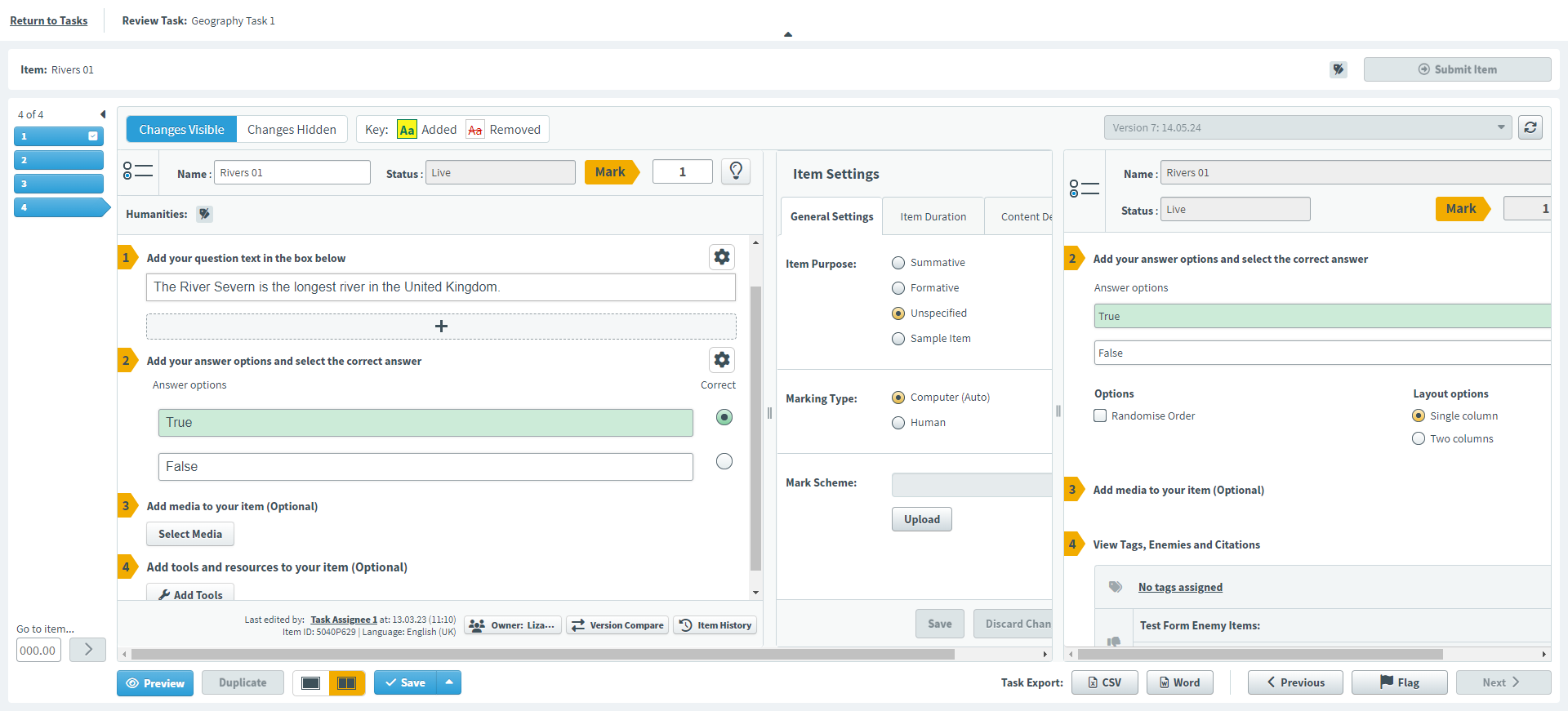
You can edit the original item’s question stems, answer options, media, tools, and item settings. For more information on editing items, read Creating items.
Switch between different assignees’ edited item versions in the Version menu.

By default, the assignee’s changes are highlighted on their edited version.

Expanding the Edit screen
Use the expander at the top of the screen to collapse the task information header and expand your view of items vertically, and the expander on the left of the screen to collapse the item breadcrumb panel and expand your view of items horizontally.
You can also click and drag the separators to adjust your view of each panel.
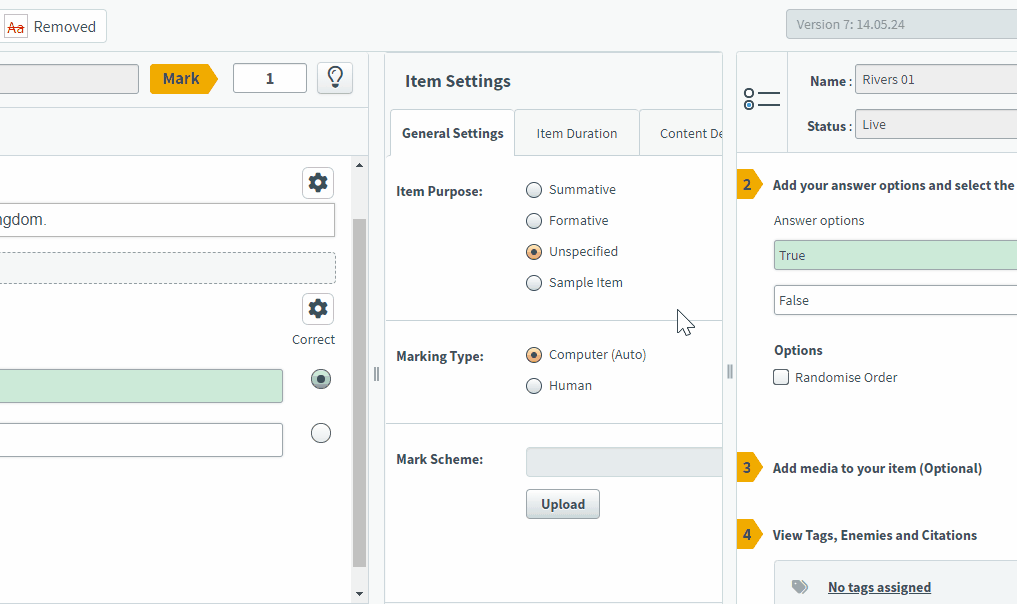
Switching viewing modes
Select Single Master View to turn off comparison view and view the original item version in full-screen mode.

Select Comparison View to return to the side-by-side view.

4. Promote changes
Select Promote to editable item next to a previous version’s question stem, answer option, or tags to copy the information over to the equivalent field on your item.

5. Submit the item
You must save your item before you can submit it. To save an item, select Save . Saving your items allows you to leave the task and return later to continue working.

The original item remains locked for editing in Item Authoring until you or a manager finalise the task.
When you have saved your item you can submit it. Select Submit Item to mark the item as complete. When an item is submitted, you can no longer edit it.

The item’s breadcrumb updates to show that the item has been submitted.
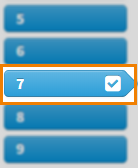
6. Close the task
After submitting all items, you can close the Review task.
Select Return to Tasks to close the task and return to the Tasks screen.
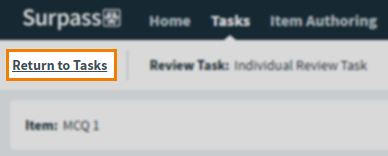
7. Finalise the task
Select Finalise Task in the task details panel when you are satisfied that the task is complete.

This changes the task’s status to Complete.
Reopening the task
You can reopen the task if you incorrectly select Finalise Task or the task needs further work.
Further reading
For more information on Review tasks, or working in other task types as a lead assignee, read the following articles:
- About task types
- About the Tasks screen
- About task managers, assignees, and lead assignees
- Working in an Authoring (Edit Existing Items) task as a lead assignee
- Working in an Authoring (Create New Items) task as a lead assignee
- Working in a Shared Review task as a lead assignee
- Working in an Item Analysis Review task as a lead assignee
- Working in a Standard Setting task as a lead assignee











